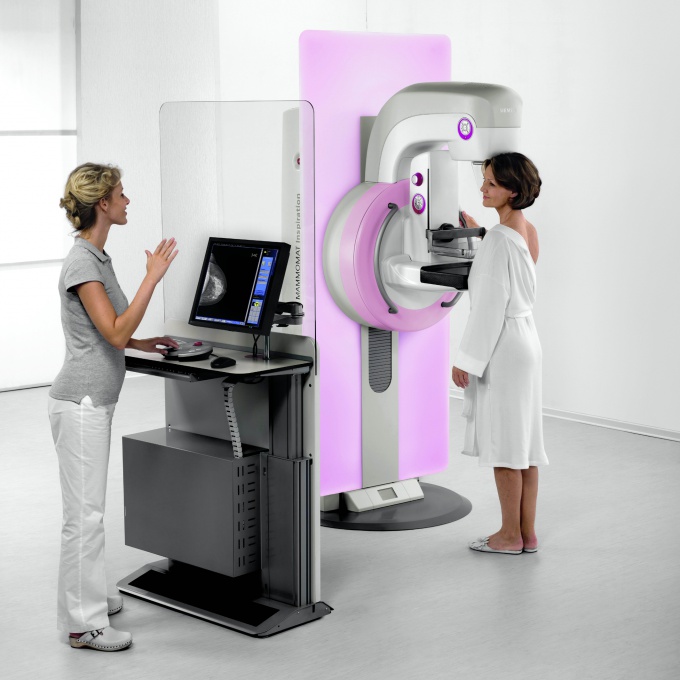Instruction
1
If you have not been a mammologist, at the first sign of discomfort in the chest, you must immediately contact the doctor. Symptoms of most diseases of the mammary glands can be the seal of the breast, discoloration of the nipple or discharge from them. Symptoms may be accompanied by pain.
2
Regular physician's consultation is necessary if you are over forty years old and you were previously identified inflammation or disease of the mammary glands.
3
On reception the doctor will ask you questions, finds out complaints, then, palpate the breast in the standing and lying down and explores the axilla and supraclavicular region. Patients up to 40 years, as a rule, prescribe a breast ultrasound. After 40, the breast grows fat tissue, therefore, more informative method of research is considered to be a mammogram (x-ray of the breast). If necessary, your doctor may prescribe additional methods of diagnostics. It can be ductography that can help you find the condition of the ducts of the breast, puncture – analysis of the contents of the cyst, and others.
4
In order to get to mammologist, find out, was it the practice in your district clinic specialist. If not, you will be directed to the appropriate medical facility.
5
In addition, there are a large number of clinics where you can get expert advice. The leading center is the Federal Mammography Center of Russia, located in Moscow. We practice a leading mammologists and has all the necessary equipment for research.
6
Make an appointment preferably in advance. It is important to get to the doctor from the sixth to the twelfth day of the menstrual cycle, as all surveys are carried out in this period.
7
There are factors that adversely affect breast health. This is the early beginning of the menstrual cycle (11 years), late menopause (after 56 years), the presence of gynecological diseases, hormonal background, strong nervous shock, frequent and early abortions, the abandonment of breast-feeding and illness of relatives on the maternal line.
Note
You need to see a specialist if:
- you have a feeling of discomfort in the chest;
- you are at risk for the development of breast cancer;
- are you going to start taking hormonal preparations.
- if you have suffered injuries, infections or breast surgery.
- you have a feeling of discomfort in the chest;
- you are at risk for the development of breast cancer;
- are you going to start taking hormonal preparations.
- if you have suffered injuries, infections or breast surgery.
Useful advice
The Phone Number For The National Breast Centre Of The Russian Federation (495) 788-48-33
Address – Moscow, street trade-Union, house 86
Address – Moscow, street trade-Union, house 86



